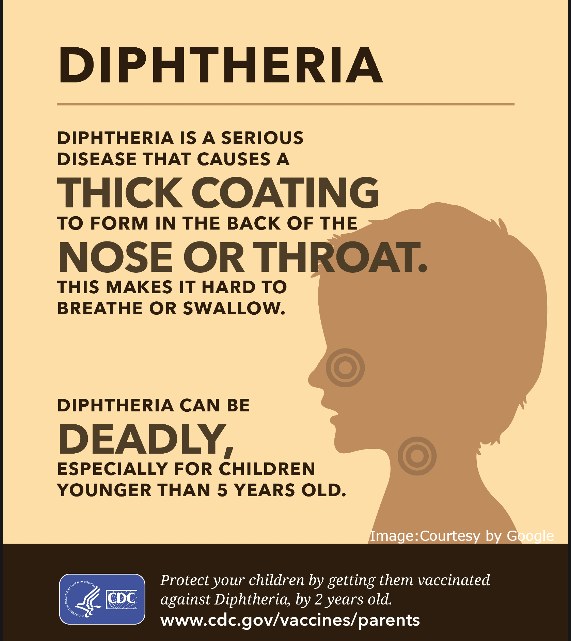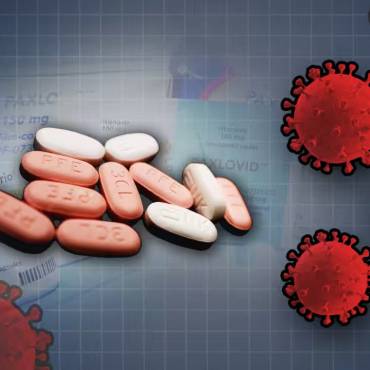Diphtheria is a bacterial infection that targets a person’s nose, sore throat, and strep throat. The infection spreads easily among children under 5 and adults over 60. Diphtheria is less common in the United States and Europe than in other countries.
What is diphtheria?
Diphtheria is one of the most contagious bacterial infections, affecting a person’s nose or sore throat. Although less common, the skin can be affected as well. The bacteria that cause diphtheria commonly spread when the cough or sneeze of an infected man passes the infection to a healthy person. The development of diphtheria in the course of typhoid fever is probably often overlooked because healthcare professionals do not often feel called upon to make thorough examinations of the throats of their patients who have typhoid symptoms.
If we compare, diphtheria is less common in the United States because citizens are known to get timely diphtheria vaccine against the infection.
Immunization plays a major role in preventing the occurrence of diphtheria. The risk of catching the infection is only enhanced when there’s a visit to a country that has no immunizations or lacks recent vaccine updates.
What causes diphtheria, and who is at risk?
Diphtheria is caused by the bacterium named Corynebacterium diphtheria. Some often get confused with cholera symptoms due to bacterial infections caused by vibrio cholera in the intestine. Diphtheria is communicable, spreading from person to person or while coming in close contact with items with bacteria on them. Also, many people correlate diphtheria with tuberculosis symptoms. Diphtheria has a short incubation period before it becomes fully noticeable and mainly attacks the throat and tonsils. TB symptoms are slow to develop, and an individual can have either an active or latent case, which can activate after a long delay. It directly affects the lungs but also bones, and other body organs.
If you unknowingly use a cup or tissue of the infected patient, the risk of bacteria transmission also grows. Further, the saliva exhaled by the infected through a cough or sneeze carries bacteria that can be transmitted easily. Even if the signs and diphtheria symptoms of the infected do not appear, the infection can still be transmitted for up to six weeks.
Before the advent of vaccines for diphtheria, children remained at the highest risk of getting infected. But as per the current scenario, people who have a weak immune system or those with AIDS are at risk, too. Overcrowded environments, poor hygiene, or unclean living conditions are other factors increasing the chances of diphtheria.
Diphtheria symptoms
The symptoms of diphtheria begin right after two to seven days after the infection has passed. The incubation period is the time taken for the symptoms to develop. It often causes strep throat symptoms. Other common symptoms include:
- Chills
- Sore throat
- Whooping cough
- Headache
- Difficulty in breathing
- Hoarse voice
- Foul-smelling and bloody nasal discharge
- Fatigue
- Pale or blue skin
- Swollen glands in the neck
- Pain while swallowing
Apart from the underlying symptoms of diphtheria, a gray-white membrane may also develop inside the throat infection. This would cover the back of the throat and tonsils and block breathing. Besides, the membrane may also bleed on removal attempts.
As mentioned above, diphtheria can affect the skin, too, and it is called cutaneous diphtheria. In this particular type, pus-filled spots appear on the skin, targeting areas like legs, hands, and feet.
In the most fatal form, nasopharyngeal diphtheria, the tonsillar infection spreads to the nose and throat structures, sometimes completely covering them with the membrane and giving rise to septicemia (blood poisoning) or sepsis symptoms.

Diagnosis and treatment of diphtheria
In diagnosing diphtheria, the doctor will first perform a physical exam to see if any swollen lymph nodes are found. Further, you would be asked about your complete medical history and whooping cough symptoms that bother you. If symptoms of diphtheria occur on the skin, a sample of the affected tissue will be sent for lab testing.
Diphtheria is counted as one of the most serious illnesses, so without any delay, you should be getting strep throat treatment quickly. The first step will be to inject an antitoxin injection. If more antitoxin doesn’t suit, the doctor may prescribe small doses first and gradually proceed to higher. Further, antibiotics work well to resolve the infection. During the treatment, you can be asked to stay in the hospital to avoid the risk of infection transmission.
Conclusion
Before the diphtheria infection takes a turn for the worse, every parent should take their children to the hospital for vaccination. Diphtheria can be prevented if every citizen becomes conscious and spreads awareness about the importance of immunization.



